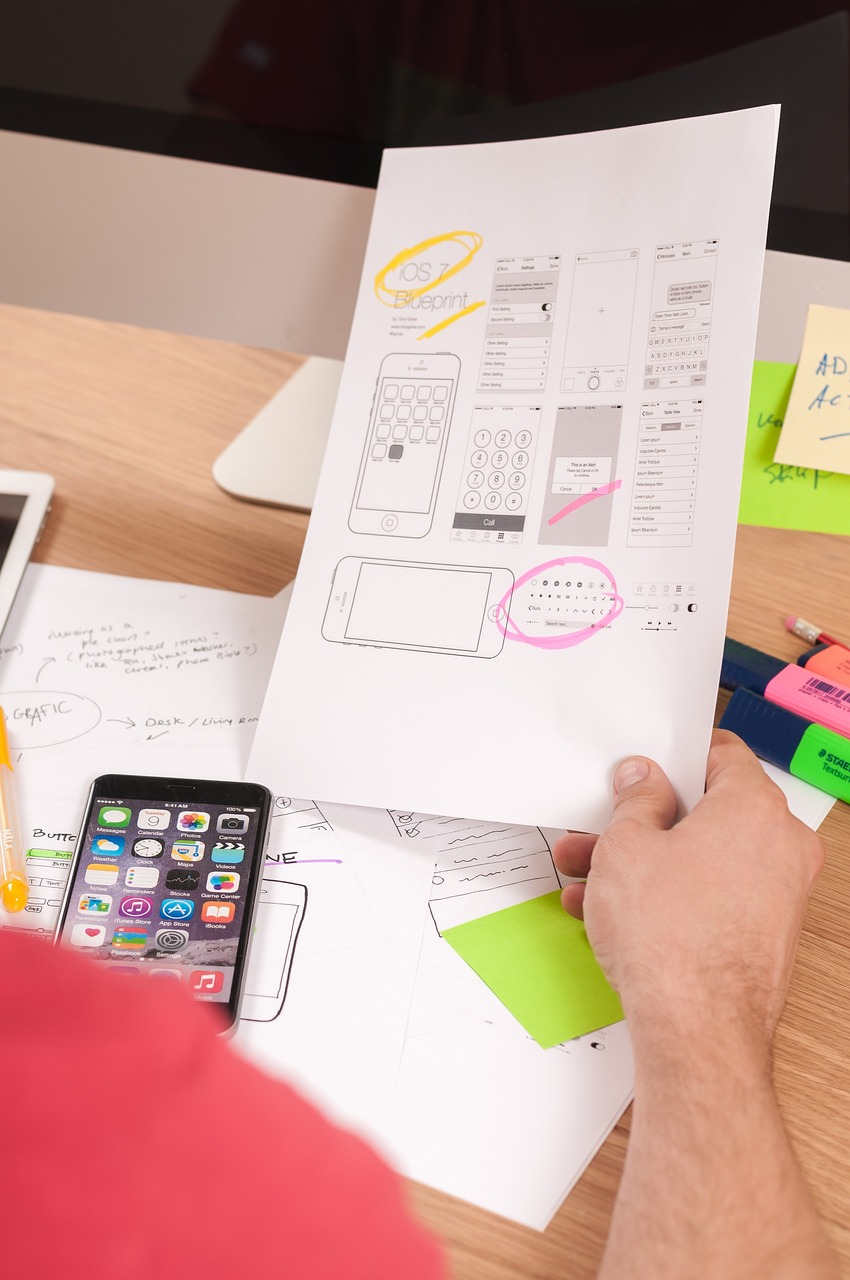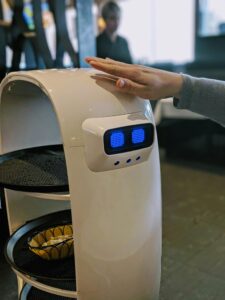Personalized AI Services
Introduction: Welcome to the Age of AI-Personalization
Imagine this, you boot up your laptop and open up Spotify and the song that plays is the one in your head. Or you go on Amazon, and the screen comes up with just the textbooks you require in your semester. Better still, you go into the gym to exercise and your smart watch adjusts the reps and sets due to the poor sleep experience the previous night. Sound like a straight out of the sci-fi thing, right? Well, due to AI, with its help, this is not a hypothetical scenario after all, as it is currently occurring.
Personalization with the powers of AI is reversing the roles between businesses and their audiences. Regardless of whether we are discussing eCommerce, streaming sites, healthcare application, or even online courses, artificial intelligence-based personalization is changing the dynamics of interaction between individuals and these platforms.
Machine learning in itself is enormous.It handles a great deal of stuff, including image recognition (including meme programs and autonomous cars) and guessing sporting results (the bragging rights to your fantasy league are at stake, after all). And then, there is natural language processing, the aspect that allows us to speak to voice assistants, autocorrect our essays drafts and navigate through consistent Tweets without squinting our eyes. Lastly, optimization does the grunt work and ensures every single suggestion you come across feels personal to you. It also places the ads that stalk you on the net (or at least that pretend to be really interested).
1. What Is AI-Powered Personalization?
When folks refer to AI-powered personalization, what they are actually saying is how companies are relying on artificial intelligence, that is, machine learning, data analysis, and natural language, to customize products, content, and services to users as they go.
This is a massive step up on the old paradigm of a blanket experience due to the ability of companies to create personalized, responsive experiences that react to your activity, preferences, demographics, and the circumstances around you.
📌 Key Components:
- By data collection, I simply mean all of the searches you make using a browser, all of the purchases you buy, all of the places you visit on your phone and all these little clicks you put in there, all that goes into becoming what is called data points that companies follow.
- Next there is machine learning. Imagine it as the part of AI that identifies the trends in those data points and tells what can possibly happen next.
- Recommendation engines take their signals off those estimates. Specifically, when I search an old movie, my phone may give me a preview of the retrospective to that particular film or give me a rebooting idea.
- Real-time adaptation implies the UI, or whatever am doing, adapts itself in real time according to anything new that it just received out of me.
2. Industries Revolutionized by AI Personalization
🛍️ E-commerce
From Amazon to Flipkart, e-commerce platforms heavily rely on AI personalization:
- Personalized product suggestions- these are the product suggestions that appear whenever you are more shopping on the internet and the product suggestions know just what you are thinking about.
- User interest-based dynamic pricing simple clicks to raise or lower prices based on how much an individual customer wants an item or, in other situations, how much time remains in front of a sale.
- Smart filters and custom search results: those search bars which really remember what you like and show you the options based on them rather than merely based on keywords you type in.
- Behavior-based cart abandonment emails- the ones that send an email to you when you abandon your cart and then pretty much guilt you into coming and buying that item.
the promotion gives a boost to the sales and also customer satisfaction. Some experiments actually demonstrated that a smaller amount of discounts instigates an equal amount of increase in revenues as the larger amount of discounts under the circumstances of the right framing of the price drop.
🎬 Entertainment and Media
Platforms like Netflix, Spotify, and YouTube use AI to:
- Thanks to AI, Netflix already knows that when I am swiping through the movies in a study room in a dorm after midnight, I am most likely in the mood to watch something casual and juicy. Therefore, it flings either “Love, Death & Robots,” or “Pushing Daisies” or even “Mindhunter” or perhaps “Black Mirror.”
- Spotify replicates that mood with several more sombre, less noisy songs and YouTube brings me an avalanche of ASMR or instrumental tracks. Wash and repeat the next time I am just relaxing at night, and the recommendations are more intelligent.
- There are days in a week, mornings to be precise when I am cramming some lecture, and the platforms change gears quickly. Netflix creates an enthusiastic experience such as The Good Place, Big Mouth or Bobs Burgers and so does Spotify by putting playlists to pump me up or podcasts that help to feel good. YouTube is also catching the mood with fast-paced vlog clips and doubly-concentrated studying instructional videos.
- The three services optimize their suggestions in real time, like sifting my cast, music, and imagery based on what I have already been watching. It is a loop that will prevent me binging trough scrolling, or being permanently bussed on the same thing.
🧘♀️ Health and Wellness
AI in fitness apps like Fitbit or MyFitnessPal provides:
1. An individual training course organized according to my time and performance level.
2. Diet tract that will assist me to achieve my goals without crashing into my personal restrictions.
3. Consistent health check-ups (mental, obviously, because it is sanity that is at stake).
4. Recommendations on sleep so that I can be able to survive lectures.
One app all in.
📚 Education
AI tutors and platforms like Duolingo or Khan Academy personalize:
- Just imagine jumping through your course work schedule in college and instead of normal listings of the content you get several check-box options by each lesson listing. What are those check-boxes? They come to remind you that you are free to select and choose the pace at which you get to hit every target. No panic to keep pace since your professorAndroid was all light-speed on three consecutive days this time, that won;t be the case here, as the plan will revolve around what you could manage to sustain on a weekly basis.
- Same thing with feedback. Rather than waiting the entire semester to learn what you did wrong or right, the system, only slightly urges or nudges you when you log in or when you submit something on which you have been working. It is a two-sided conversation with the course content, with each side having a chance to state exactly what is working and what gets you stalled still.
- Suppose that you now aces that organic chemistry quiz–or fails miserably in it–the system will not simply shrug and proceed with whatever lesson is next. It is going to suggest on of the two thing either you want to drill down the content you scored or suggest any other totally different area where you may probably cover the gap you just left.
- Lastly, when it is time to write an exam or shoot a group project, the platform takes adaptive learning and testing into the mix. It simply means that whatever you will knock out (essay question, fill-in-the-blank, multiple-choice) will be tailored to what you have been feeding in the system. That is, you are not splashing through a set of scripted questions, you are squaring up against a test that is becoming detached in different directions trying to reflect your evolution within the course.
🛎️ Travel and Hospitality
AI personalization in travel apps like Booking.com or Airbnb includes:
- In one of my semester classes, we are all about travel personalization, how technology can customize our vacations to make them more unique. Recently I have been using a couple of beta test tools that are like game changers.
- Top on the list is the custom trip recommendations. Consider the new trip-designer chatbot that I am fiddling. It will pose quite a few questions about me, my traveling style, and it creates an itinerary on the fly. It is like going around the travelling agent and fetching your own passport virtually in a single swipe.
- Then there are personalized hotel/destination offers. These appear in my inbox when a sort of outlet that checks my mood has an offer or a sale. This has worked so that I could get hold of a couple of rooms at very low rates.
- Lastly, you have travel itinerary on the basis of your travel history. The app I use types text in my previous trip photos and notes as well as posts in social networks to recommend a place I could visit next. I feel like I have been there before since I have already seen those places on the Internet-so I know what I want to do as soon as I arrive.
- All in all, it is really blowing my mind that these tools can capture that much data and how unobtrusively they can translate and translate that data into a tailor-made vacation. Simply put, you should have technology as a supplement to your trip and not as a substitute.
3. Technologies Behind AI Personalization
🔍 Machine Learning
Machine learning (ML) models analyze massive datasets to detect patterns, preferences, and behavior trends. They help predict what users might like or need.
Types include:
-
Supervised learning: Based on labeled data (e.g., purchase history)
-
Unsupervised learning: Finds hidden patterns in unstructured data
-
Reinforcement learning: Learns optimal strategies based on rewards
🗣️ Natural Language Processing (NLP)
NLP allows machines to understand and generate human language. It’s used in:
- Let us imagine that you are communicating with an AI chatbot in order to get some support, and it begins responding in a manner that suits your mood.
- The bot reads your voice and gets the atmosphere and reacts based on it. That is sentiment-based content customization.
- So now consider that bot in search mode, same intel, different job. It simply recognized your question, delved into a huge knowledge base and vomited out the answers you really wanted courtesy of intelligent search. Combine that with an assistant application that talks to you and can enter the conversation every time you have a question to ask and you have a study partner that can assist you anytime and anywhere.
🤖 Recommendation Engines
These are the core of personalization. Popular types include:
-
Collaborative filtering is essentially the sort of thing you get on Amazon when you put a book in your basket: people who bought this book also bought.. It takes advantage of your purchasing behaviours to suggest.
-
Content-based filtering on the other hand resorts to the real descriptions of the item. That is, when you search a film in Netflix, you will receive suggestions along the lines of: see this film, it was a sci-fi thriller and you liked that then this one can be given a chance because it is also a film in thriller-fi genre. The thing is, hybrid systems combine the two approaches.
In this way, they can give you recommendations that seem more accurate than in the case when you used a single method only.
4. Benefits of AI Personalization
✅ For Businesses:
- Greatest reward: conversion rates sky rocket
- Then there is the next thing which is customer satisfaction which goes through the roof!
- Such changes establish good brand loyalty,
- Additionally, better planning of stocks and resources
- And you will trim marketing wastes.
✅ For Users:
- You therefore want to find some new applications to make life a bit easier on campus? I get you. These are my best recommendations:1. Clipped: This is gold when it comes to saving time, and it can also be considered your personal campus assistant. It helps you to keep all your lectures, reading list, assignments and exams together to ensure you have everything in one place.
2. Spotify: I am a music lover therefore I carry spotify everywhere as I find it motivating, during study time and even when I am hanging up between sessions. Moreover, it has a friendly student plan whereby charges are at a reasonable fee and unlimited scope.
3. Wattpad: Wattpad is your ticket out of the crowded library, because you can explore snippets of novels, fan fiction, and short stories on the site. I have even thought of writing up in a couple of chapters sometimes.
4. TikTok: I mean I do not wish to sound too cool but I prefer a healthy break after my study, which is usually a splash of TikTok. It is an ideal way of scrolling, laughing, and chilling. All you have to do is just limit it so that you do not vanish before your next class.
5. Canvaber: I am not that confident of a cook but Canvasber has saved me a lot. It gives you step-by-step recipes, so even such rookies as myself can manage to create something, edible.
5. Challenges in AI Personalization
Technology can also be used to make education on campus a lot more productive. To begin with, we have Google, and I definitely would not know half of what I have written down without it. There is also the group project doc, which will keep everyone up to date, even though, group members are not on the same continent. Nevertheless, technology does not always work. I have had the experience with a numerous number of internet connection failure, forgotten passwords, and lost files just as deadlines are approaching. Other than that, the number of time spent playing gadgets and applications can even reduce the time which I am supposed to save. Eventually, it is as though technology is a curse and a blessing.
🔒 Data Privacy Concerns :
The issue of privacy is a popular one in the campus and rightly so. Each semester professors give us group projects that involve collaboration online, the first question we usually ask before starting to work on them is, how confidential will this work be? It is not just that we are concerned with grade security but also we are concerned with the sale and leak of our data. On several occasions, I have noticed peers sharing personal data on group chats or shared files, believing that it is not a problem. However, the easy request of one professor to download this template has resulted in logging all keystrokes and snatching the logins of a few students. It was a lesson in front of our eyes that online, what can be considered as a personal matter is subjective; and the misinterpretation of the term can cost us reputation, GPA or even identity.
🌀 Over-Personalization :
In school in communications, we were discussing the aspect of over-personalization. It occurs when a brand begins to walk right over the border between nice and creepy. Consider a firm which sends you a birthday text message but forgets the date of the month. That is too-personalization. It is a type of message that gives you a feeling that the algorithm is aware of the name of your dog.
Anyway, personalization is also very helpful. I have a code to get free drink in my favorite coffee shop every few months. It is as though it is my own personal perk, very much like how my parents got me movie tickets as an anniversary gift. I love it.
Therefore, the trick is to maintain that it is natural. Brands ought to not assume the role of robots. I also feel less weirded-out when a brand I follow tags me in a meme that is associated with what I posted on an earlier date. It seems authentic.
It is in dire planning where over-personalization normally occurs. The brands must take notes, be well organized and demonstrate that indeed they care about details. In case they are, I am glad to give out my data.
6. Ethics of AI Personalization
As AI begins to intertwine into our daily lives even more the issues related to ethics will become ever more apparent.
As soon as we start to use a chatbot to order coffee or suggest a movie, we deal with the type of technology that seems so natural and yet so powerful. The other stacks of AI such as conversational fluency, its pattern-recognition super powers, and personalizing tend to bring up valid issues about who is actually owning this data and how it is going to get used.
There are other concerns about AI like ethics of automation beyond its use as labor: issues of bias, privacy, and algorithmic transparency surround the technology. We may not be creators of such systems, but we are subject of networks that still depend on them and have a moral obligation to be involved with their judgment, not knowing most of it.
Ethical design must ensure that AI:
- Consider this: in case we are discussing dignity, it is a fundamental right of all people. One that we all have to revere, whatever may be our background. When we do that we are not only increasing overall well-being we are ensuring that the words inclusion and fairness are not simply buzzwords. Actually, they become tangible practices, which somewhat benefits the people.
- Does not sound too complicated, does it? It really is-the difficulty is in following it through. This is where the course work, campus clubs and student mentorship do their duty. It can be a lesson about power structures, or the discussion of representation, or following the mentor; but you are already doing the homework, which will result in the actual change.
7. Personalised AI Services of the Future
Personalization will become
-
Hyper-personalized: At micro-moments,
-
mood Predictive: To know the needs before the users make any move.
-
Cross-platform: Cross-device user experience since all devices
-
Being emotion-sensitive: Being able to adjust to your emotions on the spot
-
Powered by AI-agent: All-autonomous agents performing real-life duties
🌟 Application: AI Lifestyle Assistant
Consider an artificially intelligent personal assistant such as the type depicted by Siri 10.0 or Google Gemini Concierge that: Wakes you up gently based on sleep cycles
-
Wakes you up gradually according to sleep shifts
-
Prescribes your breakfast based on the glucose level
-
Keeps your burnout at a low minimum by scheduling your meetings
-
Recommends the playlist to fit your energy in the afternoon This level of personalization could redefine comfort, productivity, and well-being.
Performs a massage when it catches you getting heated up in your stress level
This degree of customization can reinvent comfort, efficiency and wellness.
8. Case Studies Personalization in Action
📦 Amazon
AI-Uses:
Activate interactive homepages
Recommend repeat sales
mail personalized transactions and delivery propositions
Enable Alexa to help in voice commerce
📺 Netflix
Takes more than one thousand models of recommendations to use
Makes a personal experience not only of what you view, but of how you view it (thumbnails, descriptions)
💪 WHOOP
A fit band which:
Custarithmizes recovery plans
Regulates exercises about load
Favors sleep times
9. Best Practices on AI Personalization in Your Company
Here is how to get started, if you are a start up, SME or enterprise: Start with clean, ethical data.
-
Use clean ethical data.
-
Target your audience reasonably.
-
Apply the tool of the AI, such as ChatGPT, Segment, Adobe Sensei, or Salesforce Einstein.
-
Begin small-scale personalization experiments (e.g. homepage or email).
-
Choose transparency and opt-ins.
Regularly audit your algorithms to be fair and accurate.
My Conclusion: Mass Personalizing Rather than Mass Producing
We are much beyond one-size-fits-all. Artificial intelligence has opened a new world – the world where we no longer have to adapt to the services.
As a business who wants to grow, a developer who wants to create smarter interfaces, or a consumer who wants to benefit it, AI-based personalization is defining the future of the interaction.
However, there is the huge responsibility along with great personalization. It is trust-building that will yield results, and all the other factors of respecting privacy and empowering through AI are essential to success.
The future is individual – and that is how we will get there via AI.
10. The Future of AI for Personalized Services
What Lies Ahead?
-
AI that understands your “digital twin”: Your preferences, goals, fears, habits.
-
Context-aware personalization: Knowing what you want based on time, place, and mental state.
-
Personalized privacy settings: AI that lets you control how you’re tracked.
-
Neuro-personalization: Adapting content based on brainwave responses via wearable tech.
-
Multi-agent systems: A team of AI agents coordinating to serve your needs 24/7.
But Also, A Warning…
-
Personalization should not become manipulation.
-
Consumers must retain autonomy and understandability.
-
Transparency, explainability, and opt-out features must be universal.
Conclusion: AI Personalization — A Mirror of Humanity
As AI learns to shape services uniquely for each of us, it’s also learning about us — our preferences, our personalities, our quirks. AI for personalized services isn’t just about convenience — it’s about empathy at scale.
But personalization must be ethical, respectful, and transparent. It must give users control — not just comfort.
Done right, it makes life easier, richer, and more human.
Done wrong, it risks building a digital world where autonomy disappears.
In this AI-driven world, the most powerful services won’t be the ones that are fast or smart — they’ll be the ones that understand you.






